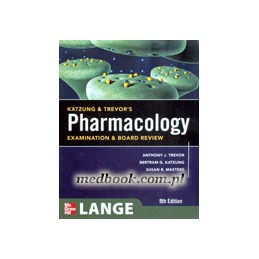- Obniżka


 Dostawa
Dostawa
Wybierz Paczkomat Inpost, Orlen Paczkę, DHL, DPD, Pocztę, email (dla ebooków). Kliknij po więcej
 Płatność
Płatność
Zapłać szybkim przelewem, kartą płatniczą lub za pobraniem. Kliknij po więcej szczegółów
 Zwroty
Zwroty
Jeżeli jesteś konsumentem możesz zwrócić towar w ciągu 14 dni*. Kliknij po więcej szczegółów
The most trusted and efficient pharmacology review – complete with 1000+ Q&As -- and now in full color
5 STAR DOODYS REVIEW!
The authors have designed this book to foster the mastery of pharmacology for students who have to pass course, module, or certification examinations....This is one of the best review books in pharmacology. The latest version is far superior, both in content and presentation, to previous versions. I give it my highest recommendation.--Doodys Review Service
From the authors of Basic and Clinical Pharmacology, the leading pharmacology textbook, here is the newest edition of the best review book available for medical pharmacology course exams and board examinations. This skill-building guide comes with over 1000 review questions and answers –- far more than most other pharmacology reviews –- and a chapter-based approach that facilitates use with course notes or larger texts.
Features::
Opis
Indeks: 14164
Autor: Aleksandra Mączyńska
